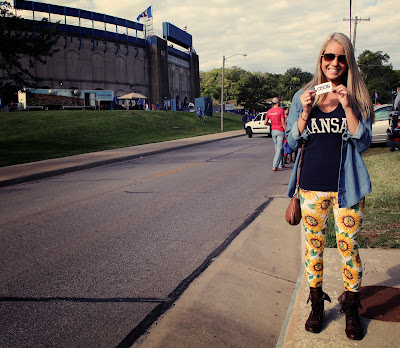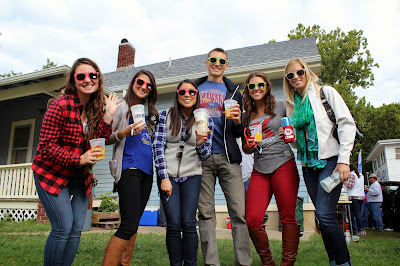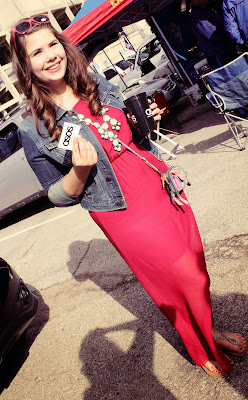BARRY DECK:
Barry is a seasoned brand experience professional who has straddled the imaginary divide between creative and account leadership. Keenly aware of recent changes in how consumers make decisions and their effect on business. Collaborates with others to understand business problems and deliver value by finding new ways to drive results from a company’s core outward, in product development, innovation, customer experience, and marketing — throughout the funnel from awareness to evangelism. He has an MFA in visual communication from California Institute of the Arts and a BFA in visual communication from Northern Illinois University.
HIS WORK:
He
has an MFA in visual communication from California Institute of the
Arts and a BFA in visual communication from Northern Illinois
University.
- See more at:
http://banklesstimes.com/ourpeople/biography-barry-deck/#sthash.JiHWFjDM.dpuf
Barry
is a seasoned brand experience professional who has straddled the
imaginary divide between creative and account leadership.
Keenly aware of recent changes in how consumers make decisions, Barry is an expert is finding new ways to drive results from awareness to evangelism.
Barry is responsible for developing the BanklessTimes image, identity and branding as well as the prototype site design.
He is a principal in the Barry Deck Group in Los Angeles, a brand design and strategy group dedicated to helping brands build great customer and business relationships.
Barry led brand launches and relaunches with Coca-Cola and other major national brands.
Prior to starting his own firm, Barry was a creative director at Ogilvy & Mather in New York.
He has an MFA in visual communication from California Institute of the Arts and a BFA in visual communication from Northern Illinois University.
- See more at: http://banklesstimes.com/ourpeople/biography-barry-deck/#sthash.pFlaZAeF.dpuf
Keenly aware of recent changes in how consumers make decisions, Barry is an expert is finding new ways to drive results from awareness to evangelism.
Barry is responsible for developing the BanklessTimes image, identity and branding as well as the prototype site design.
He is a principal in the Barry Deck Group in Los Angeles, a brand design and strategy group dedicated to helping brands build great customer and business relationships.
Barry led brand launches and relaunches with Coca-Cola and other major national brands.
Prior to starting his own firm, Barry was a creative director at Ogilvy & Mather in New York.
He has an MFA in visual communication from California Institute of the Arts and a BFA in visual communication from Northern Illinois University.
- See more at: http://banklesstimes.com/ourpeople/biography-barry-deck/#sthash.pFlaZAeF.dpuf
PAUL ELLIMAN:
Paul is an artist and designer based in London. His work combines an interest in typography and the human voice, often referring to forms of audio signage that mediate a relationship between both. His typeface Found Fount (aka Bits) is an ongoing collection of found ‘typography’ drawn from objects and industrial debris in which no letter-form is repeated. Elliman's work has addressed the instrumentalist of the human voice as a kind of typography, engaging the voice in many of its social and technological guises, as well as imitating other languages and sounds of the city included the non-verbal messages of emergency vehicle sirens, radio transmissions and the muted acoustics of architectural space.
HIS WORK:
RICK VERMEULEN:
Rick Vermeulen was born in Schiedam, the Netherlands in 1950. He studied graphic design at the Rotterdam Academy, graduating in 1972. From 1975, he worked regularly for the publisher Bert Bakker and was a participant in Rotterdam’s Graphic Workshop, where designers and artists produced material for cultural organisations in the city and events such as the Rotterdam Film Festival. From 1978-82, Vermeulen was an editor of Hard Werken magazine, along with Willem Kars, Henk Elenga, Gerard Hadders and Tom van den Haspel. In recent years, Vermeulen has designed two typefaces for Fuse. He collaborates with Inizio and works on freelance projects for publishing and other clients.
HIS WORK:
CORNEL WINDLIN:
After graduating from Schule für Gestaltung Luzern, Cornel Windlin moved to London in 1988 to work for Neville Brody and later became art editor for THE FACE magazine. In 1993 he returned to his native Switzerland and started his own design practice in Zurich. He has lectured in the US, England, Germany, Austria, Israel and Switzerland. He currently works as a designer/art director in both Zurich and London for a number of clients in both cultural and commercial fields. Cornel Windlin started creating typefaces primarily for use in his own work while still at art school. Together with Stephan Müller, he formed the digital font foundry LINETO to distribute his fonts and those of an illustruous circle of friends. Windlin has created corporate typefaces for clients as diverse as Mitsubishi cars or the Herzefeld Memorial Trust, or custom fonts for projects at Kunsthaus Zurich, Tate museums as well as various editorial projects.
HIS WORK:
was an American graphic designer of Hungarian origin, well known for his work as editor-in-chief of Colors magazine.
Kalman was born in Budapestand became a U.S. resident in 1956. He later attended NYU, dropping out after one year of Journalism classes. In the 1970s Kalman worked at a small New York City bookstore that eventually became Barnes & Noble. He later became the supervisor of their in-house design department. In 1979 Kalman, Carol Bokuniewicz, and Liz Trovato started the design firm M & Co., which did corporate work for such diverse clients as the Limited Corporation, the music group Talking Heads, and Restaurant Florent in New York City's Meatpacking District. Kalman also worked as creative director of Interview magazine in the early 1990s.
HIS WORK:
TOBIAS FRERE-JONES:
Tobias is an American designer who works in New York City with fellow type designer Jonathan Hoefler. Since 1989, Jonathan Hoefler and Tobias Frere-Jones have helped some of the world's foremost publications, corporations, and institutions develop their unique voice through typography. Their body of work includes some of the world's most famous designs, typefaces marked by both high performance and high style.
HIS WORK:
We also watched this video at the beginning of our type project. This video explores the whole history of typefaces. When watching it the first time it was interesting but hard to grasp all of the information. Watching it now, I picked up more details about this history of type. Like how most of the beginning typefaces were developed and edited to benefit the legibility of it. And how during the second industrial revolution advertising created a need for new type faces to be used in large sizes for posters and billboards. This is where Egyptian, or slab serif, came from which are usually used for titles. It's also important to realize how the creation of the computer completely changed the typography world. Now anyone has the freedom to create their own unique typeface. This video is a quick and easy way to view the history of typography in an interesting way.
While my designer, Otl Aicher, isn't included in the movie "Helvetica" it was still interesting to see just how powerful this type face has been and to hear other type designers talk about this revolutionary font. I had not seen the film before, and it gave me a new perspective on the typeface.
Barry
is a seasoned brand experience professional who has straddled the
imaginary divide between creative and account leadership.
Keenly aware of recent changes in how consumers make decisions, Barry is an expert is finding new ways to drive results from awareness to evangelism.
Barry is responsible for developing the BanklessTimes image, identity and branding as well as the prototype site design.
He is a principal in the Barry Deck Group in Los Angeles, a brand design and strategy group dedicated to helping brands build great customer and business relationships.
Barry led brand launches and relaunches with Coca-Cola and other major national brands.
Prior to starting his own firm, Barry was a creative director at Ogilvy & Mather in New York.
He has an MFA in visual communication from California Institute of the Arts and a BFA in visual communication from Northern Illinois University.
- See more at: http://banklesstimes.com/ourpeople/biography-barry-deck/#sthash.pFlaZAeF.dpuf
Keenly aware of recent changes in how consumers make decisions, Barry is an expert is finding new ways to drive results from awareness to evangelism.
Barry is responsible for developing the BanklessTimes image, identity and branding as well as the prototype site design.
He is a principal in the Barry Deck Group in Los Angeles, a brand design and strategy group dedicated to helping brands build great customer and business relationships.
Barry led brand launches and relaunches with Coca-Cola and other major national brands.
Prior to starting his own firm, Barry was a creative director at Ogilvy & Mather in New York.
He has an MFA in visual communication from California Institute of the Arts and a BFA in visual communication from Northern Illinois University.
- See more at: http://banklesstimes.com/ourpeople/biography-barry-deck/#sthash.pFlaZAeF.dpuf
Barry
is a seasoned brand experience professional who has straddled the
imaginary divide between creative and account leadership.
Keenly aware of recent changes in how consumers make decisions, Barry is an expert is finding new ways to drive results from awareness to evangelism.
Barry is responsible for developing the BanklessTimes image, identity and branding as well as the prototype site design.
He is a principal in the Barry Deck Group in Los Angeles, a brand design and strategy group dedicated to helping brands build great customer and business relationships.
Barry led brand launches and relaunches with Coca-Cola and other major national brands.
Prior to starting his own firm, Barry was a creative director at Ogilvy & Mather in New York.
He has an MFA in visual communication from California Institute of the Arts and a BFA in visual communication from Northern Illinois University.
- See more at: http://banklesstimes.com/ourpeople/biography-barry-deck/#sthash.pFlaZAeF.dpuf
Keenly aware of recent changes in how consumers make decisions, Barry is an expert is finding new ways to drive results from awareness to evangelism.
Barry is responsible for developing the BanklessTimes image, identity and branding as well as the prototype site design.
He is a principal in the Barry Deck Group in Los Angeles, a brand design and strategy group dedicated to helping brands build great customer and business relationships.
Barry led brand launches and relaunches with Coca-Cola and other major national brands.
Prior to starting his own firm, Barry was a creative director at Ogilvy & Mather in New York.
He has an MFA in visual communication from California Institute of the Arts and a BFA in visual communication from Northern Illinois University.
- See more at: http://banklesstimes.com/ourpeople/biography-barry-deck/#sthash.pFlaZAeF.dpuf





















